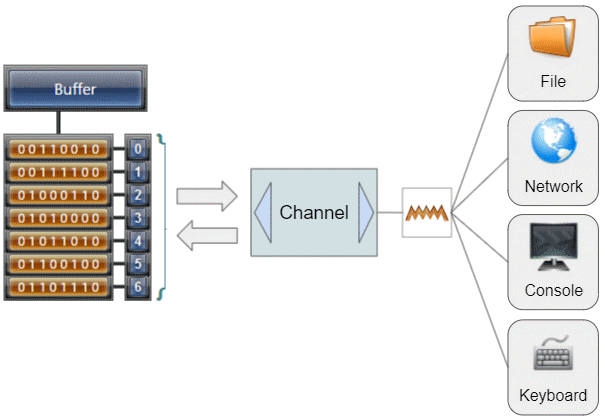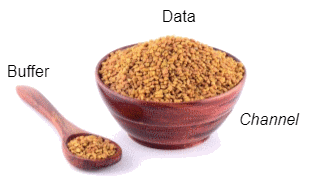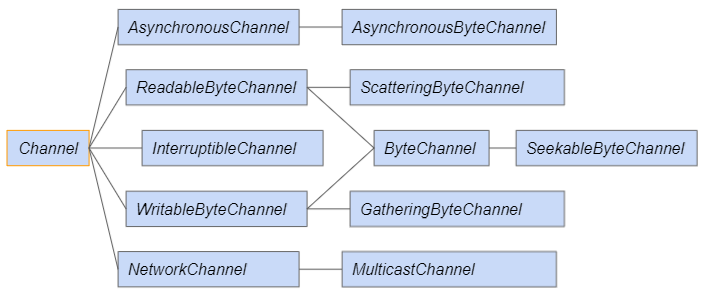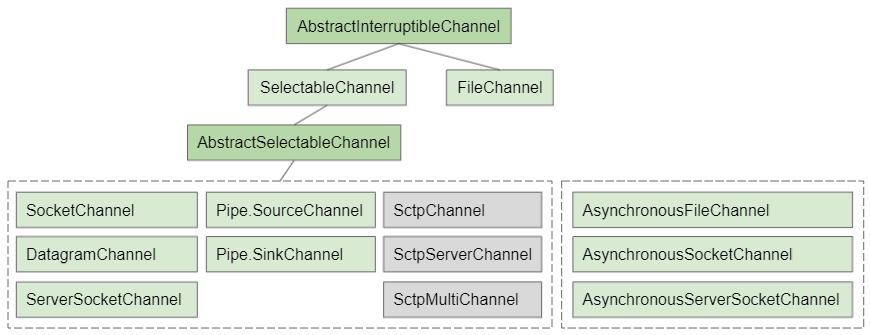Java Channel Tutorial with Examples
1. Channel
Channel is an interface in the java.nio.channels package - an important component in Java New IO (Java NIO). As we know Java NIO was first introduced from Java 1.4 as an alternative to traditional Java IO for the purpose of improving program performance.

Channel represents an open connection to an entity, such as a hardware device, file, socket, or program components, that is capable of performing IO (Input/Output) operations. In general, to read or write data to an IO device with Java NIO, you must open a Channel.
- In the case of reading data from IO devices: Data will be read from Channel into Buffer, you just need to manipulate Buffer to process data.
- In the case of writing data to IO device: You need to write data to Buffer, then it will be transferred to Channel and written to IO device.

The Buffer acts as a temporary data container with a fixed capacity, so to read or write all the data to the IO device you have to manipulate the Buffer many times.
Channel vs Stream
Basically, the Channel concept in Java NIO is similar to the Stream concept in Java IO, but with a few differences:
- You can both read and write to a Channel. Whereas with Stream, to read you need an InputStream, to write you need an OutputStream.
- Channel can be read and written asynchronously.
- Channel and Buffer have a connection with each other. You just need to manipulate the Buffer to process the data read from the Channel, and manipulate the Buffer to write the data to the Channel.
2. Interfaces and Classes
The interface hierarchy in the java.nio.channels package.

- Buffer
- Selector
- AsynchronousChannel
- AsynchronousByteChannel
- ReadableByteChannel
- ScatteringByteChannel
- InterruptibleChannel
- ByteChannel
- SelectableChannel
- WritableByteChannel
- GatheringByteChannel
- NetworkChannel
- MulticastChannel
List of classes that implement the Channel interface:

- SocketChannel
- DatagramChannel
- ServerSocketChannel
- AsynchronousSocketChannel
- AsynchronousServerSocketChannel
- FileChannel
- AsynchronousFileChannel
- SelectableChannel
- Pipe.SinkChannel
- Pipe.SourceChannel
- SctpChannel
- SctpMultiChannel
- SctpServerChannel
Java New IO Tutorials
- Java ReadableByteChannel Tutorial with Examples
- Java WritableByteChannel Tutorial with Examples
- Java Pipe.SinkChannel Tutorial with Examples
- Java Pipe.SourceChannel Tutorial with Examples
- Java ScatteringByteChannel Tutorial with Examples
- Java GatheringByteChannel Tutorial with Examples
- Java Buffer Tutorial with Examples
- Java DatagramChannel Tutorial with Examples
- Java Channel Tutorial with Examples
Show More